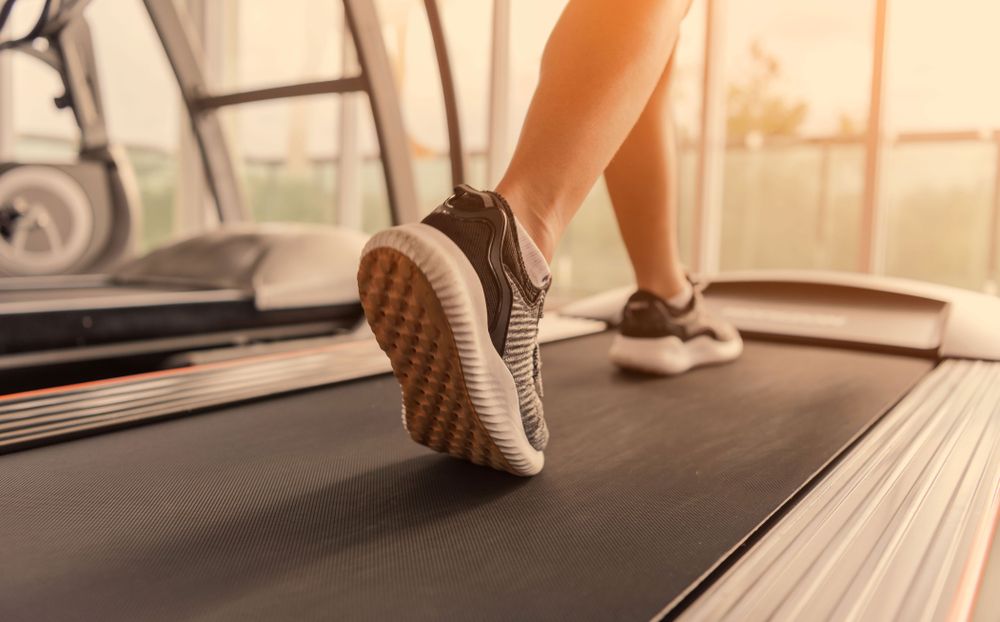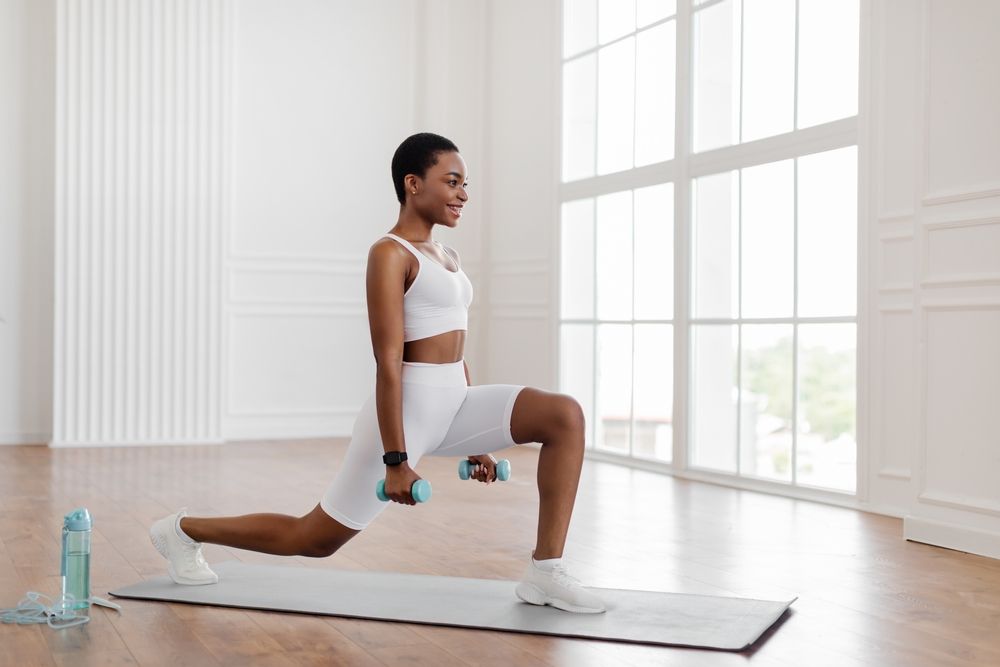
Walking is one of the simplest yet most effective forms of exercise. You can do it anywhere; it's low-impact and accessible to almost everyone. Whether you want to improve your fitness, boost your mood, or enjoy the fresh air, walking is a fantastic option. Your local track is the perfect place to start, offering a safe, measured environment where you can focus on your form and pace. In this article, we'll explore six invigorating walking workouts you can do on your local track to mix things up and keep your fitness routine exciting.
The benefits of walking extend far beyond the physical. Regular walking improves cardiovascular health, strengthens muscles, and enhances joint mobility. It's also a powerful tool for mental well-being. Studies have shown that walking can reduce stress, alleviate symptoms of depression, and improve cognitive function. A brisk walk releases endorphins, the body's natural mood lifters, helping you feel happier and more energetic. Plus, walking outdoors connects you with nature, providing a mental break from the daily grind and fostering a sense of peace and relaxation.
With years of experience promoting health and wellness through simple, sustainable practices, I've seen firsthand the transformative power of walking. As an avid walker, I've explored countless trails, parks, and tracks, always finding new ways to make walking fun and challenging. In the following sections, I'll share six of my favorite walking workouts you can easily do on your local track. Whether you're a beginner or a seasoned walker, these workouts will help you maximize the benefits of your walks and keep your routine fresh and engaging.
Workout #1: Interval Walking
Interval walking is both practical and adds variety to traditional walking. It keeps your workouts engaging, helping to prevent boredom and maintain motivation. By alternating between high-intensity bursts and recovery periods, you can significantly boost your cardiovascular fitness and burn more calories in less time. This type of workout is suitable for all fitness levels, as you can adjust the intensity and duration of the intervals to match your abilities.
Here's how to do it:
1) Begin with a 5-minute warm-up at a comfortable pace.
2) Increase your speed to a brisk walk for 2 minutes, focusing on pumping your arms and taking quick, deliberate steps.
3) Slow down to a moderate pace for 1 minute to recover.
4) Repeat this cycle for 20 to 30 minutes, maintaining good posture throughout. Keep your core engaged and shoulders relaxed.
5) As you progress, increase the duration of the brisk walking intervals and shorten the recovery periods to challenge yourself further.
2. Power Walking
Power walking is both effective and enjoyable, transforming a simple walk into an intense, heart-pumping workout. It’s a fantastic way to build endurance and improve cardiovascular health without the impact of running. Power walking is easily adaptable to any fitness level and can be done solo or with friends, making it a versatile and social exercise option.
Here's how to do it:
1) Start with a 5-minute warm-up at a moderate pace.
2) Increase your speed to walk as fast as possible while maintaining proper form. Focus on swinging your arms vigorously, keeping your elbows bent at 90 degrees. Take quick, short steps, rolling through your foot from heel to toe.
3) Maintain this high-intensity pace for 20 to 30 minutes. Keep your core tight and your posture upright and avoid overstriding to prevent injury.
3. Incline Walking
Incline walking adds a challenging twist to your regular walking routine by incorporating hills or bleachers, significantly boosting the intensity of your workout. This exercise targets different muscle groups, especially the glutes, hamstrings, and calves, making it a fantastic option for building lower body strength and endurance. Plus, the variation keeps things interesting and helps prevent workout fatigue.
Here's how to do it:
1) Start with a 5-minute walking warm-up on flat ground.
2) Find a hill or use the bleachers at your local track. Walk up the incline at a steady, moderate pace, focusing on pushing through your heels and engaging your glutes. If you're using bleachers, walk up and down the steps instead.
3) Once you reach the top, walk back down to recover, maintaining control and keeping your movements smooth.
4) Repeat this pattern for 20 to 30 minutes. Ensure proper form by keeping your back straight and your core engaged.
4. Walking Lunge Intervals

Walking lunges are effective and fun because they combine cardio and strength training into one workout. They challenge your balance and coordination while targeting your legs, glutes, and core. This dynamic movement keeps you engaged and can help improve your overall fitness and muscle tone.
Here's how to do it:
1) Begin with a 5-minute warm-up by walking at a moderate pace.
2) Stand tall with your feet together. Step forward with your right foot and lower your body into a lunge, ensuring your front knee is directly over your ankle and your back knee hovers just above the ground. Push through your front heel to rise back up and step forward with your left foot into the next lunge.
3) Use intervals of 30 to 60 seconds of lunges, paired with 2 to 5-minute periods of walking.
4) Aim to complete five or more rounds of walking lunges per session. Focus on maintaining good form, keeping your torso upright and your core engaged.
5. Side Shuffles
Side shuffles are a challenging and effective way to incorporate lateral movement into your walking workout. They help improve your agility, coordination, and balance while working the inner and outer thighs. This variation keeps your muscles guessing and adds an element of playfulness to your exercise routine.
Here's how to do it:
1) Start with a 5-minute warm-up by walking at a moderate pace.
2) Stand with your feet shoulder-width apart, knees slightly bent, and core engaged. Begin shuffling to the side by pushing off with your trailing foot and bringing your feet together before stepping out again. Keep your movements quick and light, staying low to the ground.
3) Shuffle for 30 seconds to 1 minute, then switch the direction you're facing.
4) Pair your shuffles with a 2 to 5-minute period of walking between each round and repeat this pattern for 20 to 30 minutes. Focus on maintaining a steady rhythm and keeping your core tight throughout the exercise.
6. Rucking
Rucking is a highly effective workout that combines walking with carrying weight, typically in a backpack. It adds resistance to your walk, significantly boosting calorie burn while building strength and endurance. Adjusting the weight carried makes rucking a versatile workout option.
Here's how to do it:
1) Start with a 5-minute warm-up by walking at a moderate pace without any weight.
2) Put on a sturdy backpack loaded with a weight that is challenging but manageable for you, ideally 10% to 20% of your body weight. Distribute the weight evenly and secure the backpack for comfort.
3) Begin walking steadily, maintaining good posture with your shoulders back and core engaged.
3) Walk for 20 to 30 minutes, or longer if you're comfortable. Focus on keeping a consistent pace and breathing deeply.

